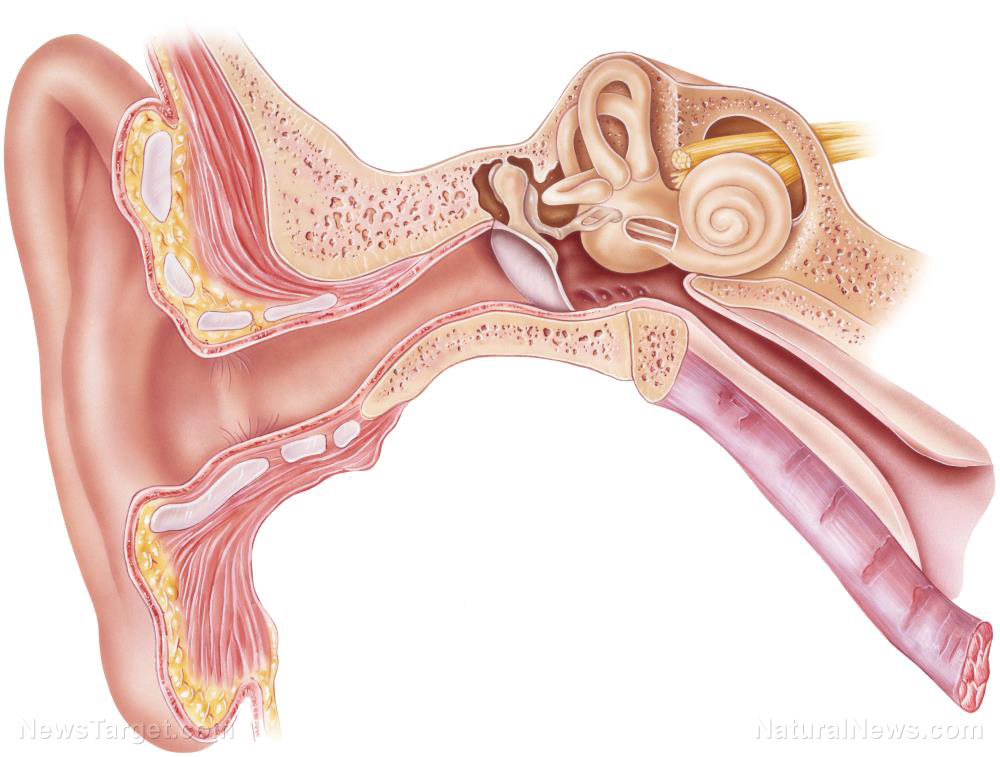The unrecognized risk of excessive earwax
11/29/2018 / By Zoey Sky

When was the last time you had your ears checked? According to medical experts, the elderly often suffer from excessive earwax. If left unnoticed, excessive earwax may cause severe health concerns, especially among the 2.2 million individuals who reside in U.S. nursing homes and assisted living centers.
Jackie Clark, the president of the American Academy of Audiology, warns that an excessive amount of earwax may cause hearing loss or ringing in the ears. In some, an earwax buildup can cause vertigo, which increases the risk of falling. Clark, who is also a board-certified audiologist, added that based on data, there is a link “between hearing loss and cognitive decline.”
Earwax, which is technically not wax but cerumen, binds with dirt, dust, and debris. The human ear naturally produces cerumen to clean and protect the ears. Cerumen also helps protect ear canal skin from irritation due to water exposure. Excess earwax often finds its way out of the canal and into the ear opening naturally, where it can then be washed away, such as when you’re bathing.
However, the self-cleaning process doesn’t always work for everyone. At least 10 percent of young children, 20 percent of adults, and over 30 percent of the elderly and developmentally disabled people suffer from earwax impaction.
Impaction occurs when too much earwax collects and completely blocks the ear canal. Based on the 2017 guidelines for the removal of impacted earwax, which was issued by the American Academy of Otolaryngology-Head and Neck Surgery Foundation (AAO-HNS), about two-thirds of individuals in nursing homes may have an earwax impaction.
Impaction and hearing problems
Based on Kaiser Health News’ analysis of payment records, federal Medicare recipients required about 1.7 million earwax removal services in 2016. This amounted to over $51 million in costs.
Dr. Seth Schwartz, a Seattle otolaryngologist who spearheaded the most recent update of AAO-HNS’ guidelines, said that this is a common occurrence among elderly patients. While it may seem like a very basic thing, earwax buildups are one of the most common causes of hearing-related problems.”
To remedy this concern, Janie York from Omaha, Nebraska, founded Hear Now mobile hearing solutions. Hear Now is a quickly-growing business that cleans hearing aids and checks the ears of older adults who are in residential care. (Related: New ear-cleaning device suctions the wax out.)
York, who caters to clients in 10 local centers, claims that this is an “epidemic” that occurs in at least three of the five clients she services. Most clients “have some degree of impaction and most are completely impacted.”
Julie Brown, assistant director of nursing in the memory support unit at SilverRidge Assisted Living in Gretna, Nebraska, warned that impacted earwax is often observed in individuals with dementia. She noted that impaction could aggravate hearing loss, which then hinders communication.
Brown added that hearing loss is also linked to aggression and other difficult behaviors in people with dementia. Thankfully, once excess earwax is cleared up, patients often calm down.
How to deal with excessive earwax
AAO-HNS reported that about 12 million consult health workers yearly with concerns about excessive earwax while eight million people need wax removal. The figures have yet to include those who use DIY treatments to eliminate earwax, a process most healthcare professionals warn against.
Schwartz suggested that “the best way to control earwax is to leave it alone.” However, this advice may fail if families or caregivers don’t regularly inspect the ears of older adults in residential care.
Healthcare guidelines state that people who use hearing aids should have regular ear checks every three to six months while patients with dementia must also have earwax removed regularly.
In most cases, earwax can be safely removed by softening it with water, saline, or commercial ear drops and then gentle syringing or manually extracting the blockage with a curette. Sometimes, the services of a professional with an otoscope may be required. The otoscope can be used to check deep inside the ear to see if cerumen is blocking the ear canal.
In 2014, Japanese researchers spearheaded a small study on earwax impaction. Data from the study showed that clearing excess earwax had an immediate effect among older patients.
According to the study findings, there were “significant improvements in hearing and cognitive performance in elderly patients with memory disorders when impacted cerumen was removed.”
Browse other articles with tips on how to avoid age-related hearing loss at Longevity.news.
Sources include:
Submit a correction >>
Tagged Under:
age-related health problems, aging, cerumen, ear canal, ear health, earwax, earwax removal, excessive earwax, geriatric health, hearing, hearing problems, longevity, natural health, old age, older people, seniors' health, signs of aging
This article may contain statements that reflect the opinion of the author
RECENT NEWS & ARTICLES
COPYRIGHT © 2017 LONGEVITY NEWS





















